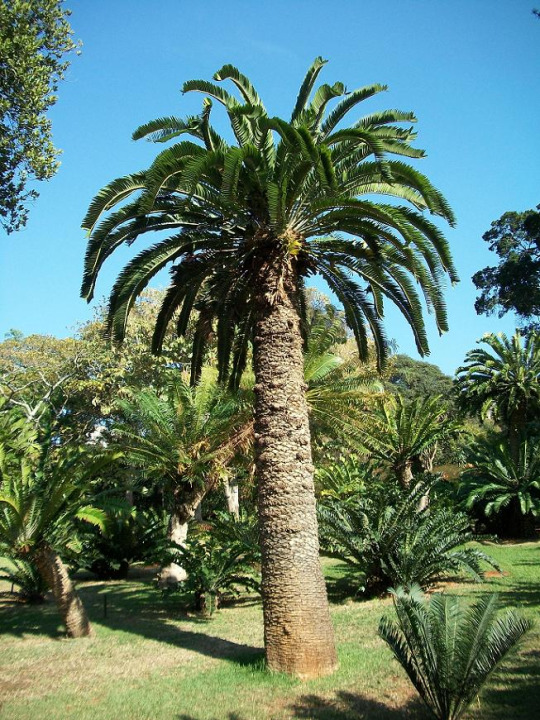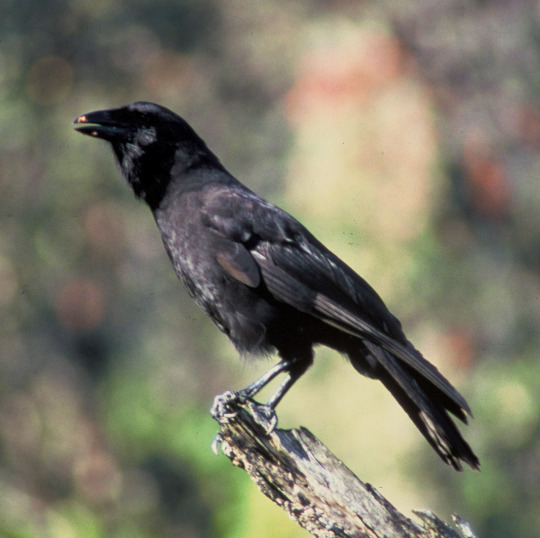Text
I've gotta do something about this blog. I might change this to be weekly as this is quite a bit of work to do daily, but i could always take a few days to queue a buncha posts? I also thought i saw a feature where you could change the date a post was posted.
This is just a melding of thoughts, lmk what you think, if any people happen to see this ^^"
0 notes
Text
Plains (Indian) Sign Language / Hand Talk — [psd]
Ethnologue status — 8b (Nearly extinct)
Population: 75 (all in the USA)
Distribution: Plains nations across central Canada, the central and western United States and northern Mexico
0 notes
Text
Northern Spotted Owl / Skelúleʔ — Strix occidentalis caurina

ICUN 3.1 status (For the whole spotted owl species) — NT (Near threatened)
NatureServe status — G2 (Imperiled)
Population: Less than 1,200 pairs in Oregan, 560 pairs in Northern California, 500 pairs in Washington (all USA), and one lone female in British Columbia, Canada
Distribution: Southwestern BC, western Washington & Oregan, through to Marin County in California
"Family Tree:"
Family - Strigidae
Genus - Strix
Species - Strix occidentalis
Etymology: I genuinely can't find anything online. Google Translate says that "occidentalis" means "western" in Latin, but who's to trust its judgement. The nłeʔkepmxcín word has probably existed for thousands of years and therefore likely cannot be traced back etymologically.
Programs: Northern Spotted Owl Breeding Program
The northern spotted owl is just one subspecies of the spotted owls that largely live along the western coasts of North America, with the other two subspecies being the California spotted owl and the Mexican spotted owl. All these owls are brown with spots, but the northern spotted owl is the darkest brown, with the smallest spots and the darkest facial disk. The skelúleʔ are particularly important figures for the spô'zêm first nation, serving as messengers to the spirit world and physical world.
While their population isn't as threatened in the USA, the Canadian population has dwindled down to one wild female, while the original British Columbian population was at least 1,000. Their population is particularly threatened, as always is the case, by logging and habitat destruction. This spotted owl is particularly threatened by the destruction of old growth forests, as those serve as their main habitats in the northern part of their range. They also serve as an important indicator species (a species that can reveal how well an environment is doing based on its status).
Bibliography:
(I didn't actively use a lot of these while writing this, but many of these links i got while making a science project on the same species. As a result, some of this is based on memory rather than articles.)
https://en.wikipedia.org/wiki/Northern_spotted_owl
https://sites.google.com/site/northernspottedowl2012bf/survival-adaptations
https://www.nwf.org/Educational-Resources/Wildlife-Guide/Birds/Northern-Spotted-Owl
https://abcbirds.org/bird/northern-spotted-owl/
https://www2.gov.bc.ca/gov/content/environment/plants-animals-ecosystems/species-ecosystems-at-risk/implementation/conservation-projects-partnerships/northern-spotted-owl#:~:text=The%20Northern%20Spotted%20Owl%20Captive,could%20support%20species%20recovery%20objectives
World's first captive-bred spotted owls released into the wild
https://en.wikipedia.org/wiki/Spotted_owl
https://news.mongabay.com/2023/05/one-left-british-columbias-last-chance-on-northern-spotted-owls/
https://alpha.gov.bc.ca/gov/content/environment/plants-animals-ecosystems/species-ecosystems-at-risk/implementation/conservation-projects-partnerships/northern-spotted-owl
https://www.timeschronicle.ca/first-ever-captive-bred-spotted-owls-released-into-wild/
0 notes
Text
[ Sorry for making so many of these placeholder posts, but i really need to study and these usually take up a lot of time ^^" ]
0 notes
Text
Wood's Cycad / Wood-se-broodboom — Encephalartos woodii

ICUN 3.1 status — EW (Extinct in the wild)
Population: Around 500 (All male clones in collections, institutions, botanical gardens, etc around the world)
Distribution: oNgoye forest, KwaZulu-Natal, South Africa
"Family Tree:"
Family - Zamiaceae
Subfamily - Encephalartoideae
Tribe - Encephalarteae
Subtribe - Encephalartinae
Genus - Encephalartos
Etymology:
Named after John Medley Wood, who discovered(?) it in 1895.
"Broodboom" is an Afrikaans word meaning "bread tree," referring to how the piths ((inside-most)) of the stems would be wrapped in animal skin, fermented, then ground up to make bread with.
Programs:
(Currently looking for these, they do likely exist as there are many endangered cycads and people are working preserve the species)
Cycads are palm-like, slow-growing trees that are reminiscent so many of the sorts of trees that grew around the dinosaurs. Rather they began evolving around 12 million years ago, whereas dinosaurs died off 54 million years ago; yet cycad-like species have been on earth for almost 300 million years. I don't know how to transition into this, but the only Wood's cycad found, in 1895, was a male, as a result all of the existing Wood's cycads in the world are male. Many expeditions for any others in the wild have been fruitless, so they likely will stay this way unless one of the trees somehow changes its gender.
Similarly to the 'Alalā, the Wood's cycad is (likely) one of the rarest species in a very endangered order. Unlike the crow species, this tree is highly sought-after by collectors around the world in an illegal cycad trade business, which causes devastating effects on the population of the already slow-growing plant. Some botanical sites have had to store their cycads behind locked gates so they aren't stolen. When these trees have been taken from their natural environment, this causes a predictable ripple effect within the other organisms in the area — the insects that pollinate cycads die when the cycads leave as they have relied so heavily on them for millions of years for food, reproduction, etc., so bringing them back into the wild causes the trees to die as they don't have pollinators.
Bibliography:
https://en.wikipedia.org/wiki/Encephalartos_woodii
https://www.dimensions.com/element/woods-cycad-encephalartos-woodii
https://pza.sanbi.org/encephalartos-transvenosus
https://news.mongabay.com/2017/05/saving-the-most-endangered-plants-in-the-world/
0 notes
Text
South China Tiger / Mèngjiālā hǔ — Panthera Tigris Amoyensis
This one is also unfinished, dw i will attempt at finishing this tomorrow… they say whilst the Haida post remains unfinished in their near vicinity, patiently awaiting an edit.
——————————————————————————————————

IUCN 3.1 status — CR (Critically Endangered)
China's Red List of Vertebrates — CR (Critically Endangered)
Population: About 100 (all in captivity)
Distribution: Fujian, Guangdong, Hunan, and Jiangxi provinces, China.
"Family Tree:"
Family - Felidae
Subfamily - Pantherinae
Genus - Panthera
Species - Panthera tigris
Subspecies - Panthera tigris tigris
Etymology:
Amoyensis is believed to come from the dialect spoken in the region in which the tiger inhabits, amoy.
0 notes
Text
Haida / X̱aayda Kil/X̱aad Kil/etc. — [hai]
I'm gonna sleep on this and finish it tomorrow, i don't have anything set in stone in regards to formatting for these yet, but i have more to say and i want to have this at least posted on the right day.
——————————————————————————————————
UNESCO status — CR (Critically endangered)
Ethnologue status — 8b (Nearly extinct) (All 3 dialects respectively)
Population: 13 L1 full speakers worldwide (6 Northern (2 Masset, 4 Alaska) 7 Skidegate)
Distribution: Haida Gwaii, BC, Canada / Prince of Wales Island, Alaska, USA
"Family Tree:"
The origin of the language is unknown, it is considered by linguists to be either a language isolate or from the Na-Dené family.
Has two main dialects, Northern [hdn] (Further divided into Masset and Alaskan) and Southern or Skidegate [hax]
Etymology:
From the Skidegate dialect words "x̱aayda" meaning "people" and "kil" meaning "voice" or "language."
0 notes
Text
Hawaiian Crow / 'Alalā — Corvus Hawaiiensis
For context i started this because i came across a post on my "For You" tab on my main ((Sharkthe-cat)) awhile back talking about an endangered lynx, and i think it said something about it being an animal of the day. If i find it, i'll link it here. But i loved that idea so i figured i'd do that myself, but with endangered organisms and languages, sort of as an outlet for my passion for ((endangered)) languages and my many researching sessions of endangered animals as a kid.
This will also likely take inspiration form the channel imshawn getoffmylawn, please check out his channel, it has lots of really cool videos on obscure and endangered languages, so you may find it of interest if you're a language nerd like me.
My main sources will be Wikipedia and the Ethnologue ((for languages from the Americas and the Pacific as i only have that version at the moment)), and i will attempt at posting once per day, alternating between both organisms and languages.
I always appreciate corrections, please let me know if i have gotten a fact wrong, if you have any other feedback, or literally have anything to say i'd love to know your thoughts on this :D
————————————————————————

IUCN 3.1 status — EW (Extinct in the wild)
NatureServe status — GH (Possibly extinct)
Population: 120 (all in breeding programs)
Distribution: Hawai'i Island, Hawai'i, USA
"Family Tree:"
Family - Corvidae
Subgenus - Corvinae
Genus - Corvus
Etymology:
'Alalā is the Hawaiian word for to cry, bleat, squeal, bawl, etc., and the crow itself was given that name for its distinctive call.
Programs: Keahou and Maui Bird Conservation Centres
As with many other crows, Hawaiian crows are known for their intelligence and socialness. Captive individuals use sticks as tools to extract food from holes drilled in logs, and juveniles are known to use them without training or learning from others. They are regarded as 'aumākua, or family guardians, by some native Hawaiians.
The 'alalā are the most endangered species in the family corvidae and the only corvid left in Hawai'i, and they have been extinct in the wild since 2002. In the wild, their main predator was the Hawaiian hawk (which itself is near threatened). Most crows adapt very well to humans presence, but the 'alalā population has gone down drastically in their presence. Their population decreased due to various reasons, including deforestation (as with many other species), the introduction of non-native species (cats, dogs, mongooses, rats), and in particular, avian malaria, caused by deforestation allowing the rise of invasive plants and mosquitoes. They are considered to be an indicator species by scientists (a species that is used by scientists to represent the state of the area based on how well it's doing in its environment), and the absence of them has caused many plant species that rely on them to suffer as a result.
Bibliography:
https://en.wikipedia.org/wiki/Hawaiian_crow
https://volcanoheritagecottages.com/2021/11/13/the-recovery-story-of-hawaiis-revered-alala/
https://animals.sandiegozoo.org/animals/alala-hawaiian-crow
16 notes
·
View notes